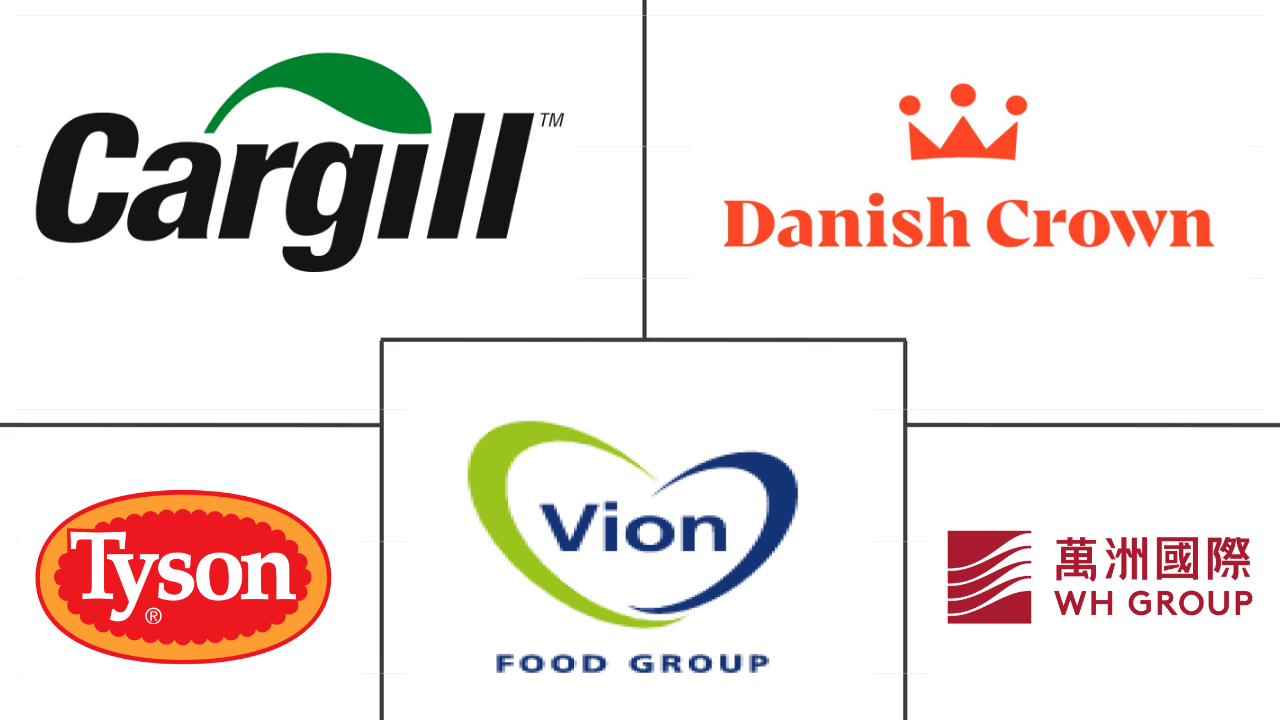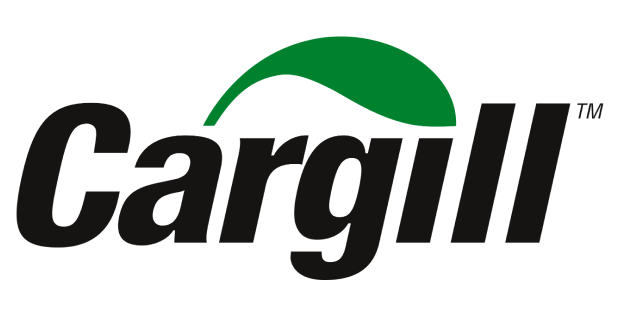Market Size of europe edible meat Industry
|
|
Study Period | 2017 - 2029 |
|
|
Market Size (2024) | USD 191.55 Billion |
|
|
Market Size (2029) | USD 199.21 Billion |
|
|
Largest Share by Type | Pork |
|
|
CAGR (2024 - 2029) | 0.79 % |
|
|
Largest Share by Country | Germany |
Major Players |
||

|
||
|
*Disclaimer: Major Players sorted in no particular order |
Europe Edible Meat Market Analysis
The Europe Edible Meat Market size is estimated at 191.55 billion USD in 2024, and is expected to reach 199.21 billion USD by 2029, growing at a CAGR of 0.79% during the forecast period (2024-2029).
191.55 Billion
Market Size in 2024 (USD)
199.21 Billion
Market Size in 2029 (USD)
2.53 %
CAGR (2017-2023)
0.79 %
CAGR (2024-2029)
Fastest-growing Segment By Type
40.80 %
value share, Pork, 2023
The increasing domestic supply and export demand are able to cater to the increased demand for pork and processed pork products such as bacon, sausages, and ham.
Fastest-growing Segment By Country
12.74 %
value share, Germany, 2023
The increased preference for the consumption of processed meat products and pork is driving the market, aided by the expansion of pork production in the country.
Fastest-growing Segment By Type
1.09 %
Projected CAGR, Mutton, 2024-2029
Mutton has been part of European cuisine, and migration and globalization have also contributed to the increased demand for mutton in Europe in recent years.
Fastest-growing Segment By Country
1.21 %
Projected CAGR, Italy, 2024-2029
The excess availability with affordable costs and the growing availability of exotic cuts and premium tastes in various meat types are driving meat consumption in Italy.
Fastest-growing Segment By Company
3.11 %
market share, Cargill Inc., 2022

The increasing exotic varieties of offerings by the company in canned format with increased shelf-life is catering to the company's growth in the edible meat market.
The rise in demand for ready-to-eat meat favors the market
- Pork is the major type of meat consumed in Europe, and the sales of pork increased by 1.57% in 2022 compared to the previous year. In 2021, the European pork meat market experienced a major trend related to rising output. EU market leaders continuing to expand production are Spain, Denmark, and the Netherlands. The supply of pork in Europe was significantly greater than the demand in 2022. As a result, pork consumption increased across Europe, particularly in the south. However, lower carcass prices and the threat of additional African Swine Fever (ASF) outbreaks in Central Europe may hamper the growth of the market in the future.
- Beef consumption is mainly driven by the demand for ready-to-eat meat products across Europe. In Europe, the demand for processed beef is rising due to increased demand for convenient food like sandwiches, beef sticks, bacon, beef jerky, and pork rinds. Processed beef is projected to register a CAGR value of 1.68% during the forecast period. BRF SA, Cargill Inc., Danish Crown Amba, and Tyson Foods Inc. are the key players that offer processed beef in Europe.
- Mutton is the fastest-growing segment of meat in the region, and it is projected to record a CAGR value of 0.91% during the forecast period. There are over 70 million sheep and goats in the European Union (85% sheep and 15% goats). Greece, Spain, France, and Romania are the major mutton-producing areas in Europe. Around 20% of the mutton that is consumed in the region is imported. New Zealand supplies around 89% of the mutton requirement in all other European countries. The meat from lamb (sheep meat, less than one year) is more popular than regular mutton (sheep meat, less than three years) in Europe.
Poultry and pork meat consumption is driving the market
- Edible meat sales in Europe have seen stable growth over the years, increasing by 8.97% from 2018 to 2022. Russia, France, and Germany dominate the consumption trend. In 2022, these countries also dominated the livestock population count in the region, with Russia (18.56 million) leading the trend, followed by France (17.78 million), Germany (11.3 million), and Spain (6.63 million). Pork is the most consumed meat type in Europe.
- In Europe, Italy is the fastest-growing edible meat market. It is projected to register a CAGR of 1.20% by value during the forecast period. This increase was mainly due to the increased pork consumption in Italy. Italy accounted for about 41.96% by value of the pork market share in 2022 compared to other meat types. More than 70% of pigs grown in Italy are bred in the north, while 74% of farms in the center-south are in the industry due to the small size of the farms. The pork industry also increasingly utilizes data analytics and blockchain technology, utilizing sensors to enhance traceability, transparency, and food safety.
- The European edible meat market is projected to record a value CAGR of 0.32% during the forecast period. The lower progression can be attributed to reduced meat consumption in European countries. Nearly 46% of Europeans reported eating less meat in 2022 than the previous year. However, some other countries are yet to catch up with this trend due to their food cultures. Some cultures believe that plant-based meat lacks adequate flavor and nutrition. They consider meat as a proper meal and a good source of nutrition. Some people also believe plant-based foods are too expensive, difficult to prepare, or visually less appealing.
Europe Edible Meat Industry Segmentation
Beef, Mutton, Pork, Poultry are covered as segments by Type. Canned, Fresh / Chilled, Frozen, Processed are covered as segments by Form. Off-Trade, On-Trade are covered as segments by Distribution Channel. France, Germany, Italy, Netherlands, Russia, Spain, United Kingdom are covered as segments by Country.
- Pork is the major type of meat consumed in Europe, and the sales of pork increased by 1.57% in 2022 compared to the previous year. In 2021, the European pork meat market experienced a major trend related to rising output. EU market leaders continuing to expand production are Spain, Denmark, and the Netherlands. The supply of pork in Europe was significantly greater than the demand in 2022. As a result, pork consumption increased across Europe, particularly in the south. However, lower carcass prices and the threat of additional African Swine Fever (ASF) outbreaks in Central Europe may hamper the growth of the market in the future.
- Beef consumption is mainly driven by the demand for ready-to-eat meat products across Europe. In Europe, the demand for processed beef is rising due to increased demand for convenient food like sandwiches, beef sticks, bacon, beef jerky, and pork rinds. Processed beef is projected to register a CAGR value of 1.68% during the forecast period. BRF SA, Cargill Inc., Danish Crown Amba, and Tyson Foods Inc. are the key players that offer processed beef in Europe.
- Mutton is the fastest-growing segment of meat in the region, and it is projected to record a CAGR value of 0.91% during the forecast period. There are over 70 million sheep and goats in the European Union (85% sheep and 15% goats). Greece, Spain, France, and Romania are the major mutton-producing areas in Europe. Around 20% of the mutton that is consumed in the region is imported. New Zealand supplies around 89% of the mutton requirement in all other European countries. The meat from lamb (sheep meat, less than one year) is more popular than regular mutton (sheep meat, less than three years) in Europe.
| Type | |
| Beef | |
| Mutton | |
| Pork | |
| Poultry | |
| Other Meat |
| Form | |
| Canned | |
| Fresh / Chilled | |
| Frozen | |
| Processed |
| Distribution Channel | ||||||
| ||||||
| On-Trade |
| Country | |
| France | |
| Germany | |
| Italy | |
| Netherlands | |
| Russia | |
| Spain | |
| United Kingdom | |
| Rest of Europe |
Europe Edible Meat Market Size Summary
The European edible meat market is characterized by a diverse range of meat types, with pork being the most consumed. The market has experienced stable growth over the years, driven by increasing demand for processed beef and mutton, which is the fastest-growing segment. Key players such as BRF SA, Cargill Inc., Danish Crown Amba, and Tyson Foods Inc. dominate the processed beef sector, catering to the rising demand for convenient food products. Despite the growth in certain segments, the market faces challenges such as lower carcass prices and potential outbreaks of African Swine Fever, which could impact future growth. The market is also influenced by cultural preferences and the perception of plant-based foods, which some consumers find less appealing or nutritious.
The market's growth trajectory is supported by technological advancements in the pork industry, including the use of data analytics and blockchain for improved traceability and food safety. However, the overall market progression is tempered by declining meat consumption in some European countries, with a significant portion of the population reporting reduced meat intake. The beef sector, in particular, has seen fluctuations in production and pricing due to factors like high feed costs and supply chain disruptions. The market remains fragmented, with major companies holding a small share, and ongoing product expansions and partnerships, such as those by Cherkizovo Group, reflect the dynamic nature of the industry.
Europe Edible Meat Market Size - Table of Contents
-
1. MARKET SEGMENTATION (includes market size in Value in USD, Forecasts up to 2029 and analysis of growth prospects)
-
1.1 Type
-
1.1.1 Beef
-
1.1.2 Mutton
-
1.1.3 Pork
-
1.1.4 Poultry
-
1.1.5 Other Meat
-
-
1.2 Form
-
1.2.1 Canned
-
1.2.2 Fresh / Chilled
-
1.2.3 Frozen
-
1.2.4 Processed
-
-
1.3 Distribution Channel
-
1.3.1 Off-Trade
-
1.3.1.1 Convenience Stores
-
1.3.1.2 Online Channel
-
1.3.1.3 Supermarkets and Hypermarkets
-
1.3.1.4 Others
-
-
1.3.2 On-Trade
-
-
1.4 Country
-
1.4.1 France
-
1.4.2 Germany
-
1.4.3 Italy
-
1.4.4 Netherlands
-
1.4.5 Russia
-
1.4.6 Spain
-
1.4.7 United Kingdom
-
1.4.8 Rest of Europe
-
-
Europe Edible Meat Market Size FAQs
How big is the Europe Edible Meat Market?
The Europe Edible Meat Market size is expected to reach USD 191.55 billion in 2024 and grow at a CAGR of 0.79% to reach USD 199.21 billion by 2029.
What is the current Europe Edible Meat Market size?
In 2024, the Europe Edible Meat Market size is expected to reach USD 191.55 billion.

